|
On 18 August we played a day-long refight of the battle of Ligny, using Honour Games’ Blücher rules and 20mm plastic figures. We began around 10 and finished at 6, with the French just meeting their victory conditions. Oddly, the Prussian players seemed happier at the end of the day than the French. Rules, figures and scales Blücher is a grand tactical rules set where each unit represents roughly a Brigade. It focuses on the level of detail that would interest an army commander rather than a brigadier or battalion commander. It’s pedigree is excellent. Sam Mustafa’s first grand tactical set was called Grande Armée, which came out some years ago. He then produced the simplified Fast Play Grande Armée, which dropped a lot of detail. Finally came Blücher, which stripped back the detail even more. At each stage the rules have become more elegant but they keep a period feel and are a subtle challenge to master. Blücher’s ground scale is adaptable but I use 1” to 100 yards, the scale of Grande Armée, Volley & Bayonet and Napoleon’s Battles. This produces 3” Square unit bases. The figures are all plastics by various makers, collected over many years, with quite small unit sizes. This was a deliberate choice, partly to save cost and partly to encourage my sons who were young at the start of the project. Most of my Napoleonics are 15mm but I have never collected figures for the Waterloo campaign in the smaller scale. Keeping the players guessing Three of the players know the Waterloo campaign very well so I had to set up a way for them genuinely not to know whether either side would be reinforced from Quatre Bras, where Marshal Ney faced Wellington’s steadily reinforcing army. I wrote a decision tree for the events off table, which could have ended in a range of outcomes, broadly: French reinforcements, Allied reinforcements or nobody, at least in time to affect the game. Huw took the role of Napoleon, supported by Tim (Gérard) and Ian (Vandamme). Keith was Blücher, with Matt (von Zieten) and Nick (von Pirch). I like each player to have a characteristic so made Tim inspiring, Ian vigorous, Matt steadfast and Nick heroic. If you don’t know these rules, these traits translate as good on the attack, good at getting troops moving, good on the defensive and capable of rallying lost combat power. Napoleon was a legend but not on his usual energetic form; Blücher was also a legend and mobile, which made it easier for him to send in the troops than a standard C in C. Being a legend improves your army’s break point. For orders of battle I used a few histories, mainly volume 1 of Peter Hofschroer’s Waterloo Campaign and a French language history of Ligny by Alain Arq and others. For starting strengths and general organising I used the 100 Days unit cards, released by Honour at the same time as Blücher. These cards make sorting out and deploying the army very easy. Deployment The Prussians were obliged to deploy 1 Corps first, strung along the river Ligne. The French were then to deploy 3 and 4 Corps and their three cavalry corps anywhere on the field up to 4 base widths from a Prussian unit. Finally the Prussians deployed 2 and 3 Corps then the French had the first turn. How it went The game began with Tim/Gérard attacking the Prussian right, while Ian/Vandamme screened Ligny along with the three cavalry corps. Evidently the French didn’t want to get bogged down fighting for this village. However the screening force was much the biggest French formation and while it sat watching Ligny, Tim bled his Corps dry on the French left. The Prussians meanwhile made several counter attacks against Tim, then Keith sent Nick/Pirch over the Ligne on the Prussian left to put pressure on Ian. This worked well as it constricted the French position and put their right wing on the back foot. As the elan of Tim’s units ran down trying to dislodge Matt and Ian’s wing faced off against Nick, Huw was reinforced by the Guard and, not long after, by 6 Corps. We learned after the game that Huw had ambitions to use the reserve rule to deliver a wide flanking attack with these reinforcements, but felt thwarted by his narrow deployment zone and after a couple of turns’ delay, he launched an attack up the Prussian centre. Meanwhile, off the table... Each French turn after turn 11, I rolled on the decision tree. Every roll went in favour of reinforcements arriving with Napoleon. In summary, the story grew as follows. Ney began his assault on Quatre Bras early. He kept his whole command together (meaning no enthusiastic ADC gave D’Erlon verbal orders to march eastwards) and used both 1 and 2 Corps to overwhelm the Netherlands contingent before it could be sufficiently reinforced. He then carried out his original instructions from Napoleon and directed D’Erlon towards the Ligny battlefield. Rolling for losses and delays, I concluded that in the end two divisions and the Light cavalry of D’Erlon’s Corps would arrive at Ligny, late in the afternoon but in time to influence the outcome. News reached Huw that Ney had taken the crossroads at Quatre Bras and despatched D’Erlon towards the Ligny battlefield. When these arrived on the table he gave their command to Tim, who found the fresh troops a great boost. With the revelation that he would not be reinforced by Wellington as expected, Keith took stock. His left was doing well against the French right, which continued to retire before 2 Corps. But the right was now paper-thin, facing fresh troops, while the centre was buckling under the punch of the Imperial Guard. Keith ordered his army to withdraw, under the cover of 2 Corps. When we reached the last turn of the gaming day, the Prussian line had started to contract from the right and rotate clockwise, as it withdrew on Sombreffe. The French meanwhile had finally cracked the Prussian centre and were advancing to cut off the Prussian right. The Prussians were close to their break point and the day went to Napoleon. Hail the happy losers
And here is the curious thing. The French victors seemed to feel a bit flat as the day ended, whereas the Prussian team was brimming with good humour and pleased with its performance. Why was this? Well, I think the players on the side that lost in history may feel less pressure to win the game: the Prussians did very well and cooperated effectively, with messages flying in all directions throughout the day. They didn’t win but were well placed to fight another battle. The French on the other hand came close to a bigger victory than they achieved: an earlier assault by the Guard could have cut off half the Prussian army. Also, I fear that Huw felt thwarted, not by the performance of his side but by the scenario and rules. His first hope was to send the Guard on a sweeping reserve move to fall upon a Prussian flank, but the field was constricted by the table edge and he couldn’t calculate a ‘legal’ route that would deliver his units unobserved on the enemy flank. I do sympathise and can’t change the fact that the table was 4 feet wide so he did not have space at the rear to flank March. That said, the French right could have deployed much further forward than they did and on top of that they were then soon retreating from their starting positions. When the umpire’s happy, everybody is happy Overall I was very pleased with the day. I think the game was well balanced and both teams played in good spirit. The decision tree for events at Quatre Bras gave a plausible result and I will use the idea again. I think the Blücher rules are perfect for a multiplayer game like this. Between 1030 and 6pm with a break for lunch, we played the full 28 turns and had very few rules quibbles. We had all played the rules before but not for some time and they came back easily. My note to self for future games is that I should check in with Commanders in Chief a few times during play, to check if they feel able to do what they wish. It hadn’t occurred to me until he said it at the end that Huw felt unable to act because of the table size. Had he told me his outflanking plan I could have worked out a way to make it possible or to explain why it wasn’t. When the game isn’t a tournament, I think the umpire should show a bit of flexibility if this helps the story to flow. I was grateful to all six players for giving up a summer Saturday and pitching in with such good humour. Multiplayer Wargames are a rare event but they have to be my favourite part of the hobby.
0 Comments
Getting the figures together Three years after we replayed Waterloo using Honour Games’ Blücher, I will be hosting a multiplayer refight of Ligny later in August. I have started organising the units, which has been nice and straightforward using the 100 Days unit cards. The figures are soft plastics from Airfix, Revell, Italieri, Esci, Zvezda and Hät. Some of them are 40 years old or more, since my friend Keith presented me with his boyhood Airfix Waterloo collection. My original plan at the start of the 1815 project had been to make a separate figure base for every Brigade in the campaign. To be able to refight Ligny, this would have required me to paint up the Prussian III Corps and French III and IV Corps in their entirety. That makes a lot of work and I don’t have that much time to prepare. Also, while there might be satisfaction in completing the whole Orbat, when would I actually play using every unit that took part in the campaign? So I decided to recycle some existing units. First I decided to relabel the French II Corps to cover most of the 3rd and 4th Corps, since one habit veste is pretty much like another. For the Prussians I already had II Corps from the Waterloo game, along with a few I Corps units. If I repurpose my IV Corps units I can make most of III Corps and a fair chunk of I Corps. However. Ever since I bought David Nash’s Prussian Army 1808-15, published by Almark, back in about 1970, I have loved the varied uniforms of the post-1812 army. I am proud of the fact that every Prussian unit painted to date has the right uniform for the regiment represented. Could I bring myself to relabel Silesian Landwehr as Westphalian, without overpainting the facing colour? Who besides me would notice, still less care if the uniforms didn’t fit? As it turns out, I realised I couldn’t do it. Even if others didn’t notice, I would know that the Prussian uniforms are wrong. I have therefore started a programme of repainting, adapting and adding to my Prussian collection so that every unit is properly dressed. And there are some great uniforms to recreate. I started with the 28th and 29th Line in I Corps, who until 1814 had been regiments in the Duchy of Berg and still wore their white Rhine Confederation uniforms. I used some of the old Airfix French that Keith had passed on. Next comes the 30th and 31st regiments in III Corps, which had previously formed the Russo German Legion and wore Russian uniform. I have ordered a box of Zvezda Russian infantry to cover these units. For the rest, I am repainting facing colours where this is easy and painting more demanding colour combinations from scratch. I also need to add more Prussian horse so have painted the West Prussian Dragoons and am about to start some Landwehr lancers. If this sounds like amazing dedication, bear in mind that I represent foot units with only 8 to 10 figures and cavalry with 4 or 5 horsemen. So I can complete a unit in an evening as long as I don’t have distractions. The clock is ticking however and I can’t afford to slack. Source Materials Meanwhile, I am thinking about aspects for inclusion in the scenario. There are two main what-ifs: D’Erlon’s I Corps movements and the arrival of Lobau’s VI Corps. D’Erlon barely contributed to the day because of countermanded orders, while Lobau only arrived from Charleroi as the battle ended. Both could have arrived earlier and contributed to the action. To help decide what, if anything, I do about these absent formations, I have been rereading Colonel Charles Chesney’s Waterloo Lectures, first published in 1868 and reprinted in the 1990s by Greenhill. Chesney is fascinating. His book is not a conventional narrative history of the campaign and in fact he presumes the reader already knows the main events. Chesney’s purpose is to analyse the various myths and assertions about the battle that were already manifold by the mid 19th century. His main target are those historians who placed blame for the French defeat on everybody else but Napoleon. It is striking how much of the mythology is still current, including in some modern histories of the campaign, not to mention in the entertaining hogwash that is De Laurentis’ film of Waterloo. I suppose two world wars didn’t help the British to give due credit to Blücher and his army, or indeed the Germans under Wellington’s command, for their contribution to victory. In this Chesney is scrupulous: he stresses the immense achievements of the German-speaking troops and places Wellington’s personal relationship with Blücher at the heart of the success. He also argues persuasively that neither Ney nor Grouchy were to blame for the alleged errors of judgement and action that were later used by Napoleon to explain away his defeat. Where is D’Erlon?
In the case of Ligny and Quatre Bras, Chesney points out that Napoleon’s order to Ney on the 16th was only to detach a Force towards Ligny once he had taken Quatre Bras with both Corps. It may have been unfortunate that due to countermanded orders D’Erlon was unable in the end to contribute on either field, but Napoleon was not counting on his arrival at Ligny, at least for some hours. Indeed, when the head of D’Erlon’s column first appeared in the distance, Napoleon was surprised to see it and delayed an attack on the Prussians until he found out who it was. Given this interpretation, I am not inclined to make D’Erlon’s arrival a particularly significant factor in the scenario. VI Corps Lobau’s VI Corps spent most of the 16th in reserve a short distance from the Ligny battlefield and came up too late in the day to contribute to the outcome. In his case I think the French should be able to use him if they wish, since he had not been given a competing task for the day. Bülow Another ‘what if’ is whether Bülow’s IV Corps could have been present at Ligny if he had shown more energy or his orders had been clearer. I think the answer is ‘probably not’. He had the furthest to travel from his cantonments and his orders did not tell him to come to Ligny. It seems to me that the only circumstances in which he could have been present on the field would have been if the army had been ordered to concentrate sooner than it actually was. This takes the ‘What If’ so far into alternative events that we could at that point change any number of factors and end up fighting a different battle altogether. Fine if we were to refight the campaign but we will only be looking at the battle of Ligny. So in summary, Bülow is out, Lobau can arrive early and D’Erlon might appear but he also might be recalled and/or arrive late, having stayed with Ney until Quatre Bras was taken. I’ll try to turn these possibilities into a series of dice rolls, to keep our generals guessing. I will be painting hard over the next several days and must then think what we need for the battlefield. There must at least be a windmill for Napoleon’s use.... |
Archives
November 2023
Categories
All
|
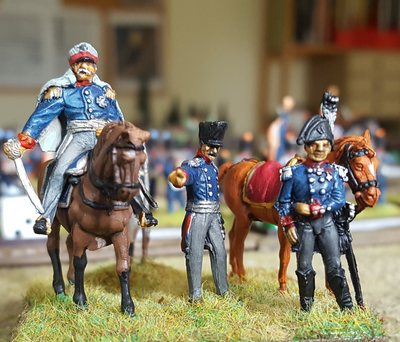




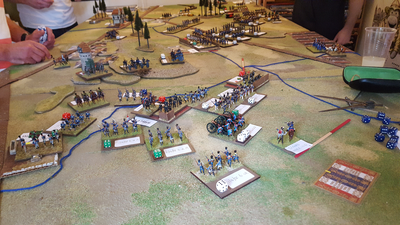
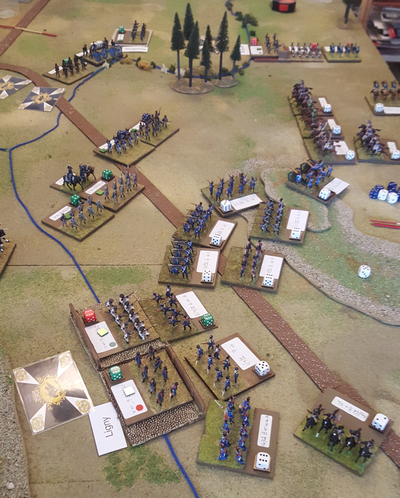

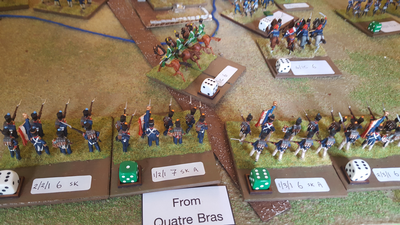
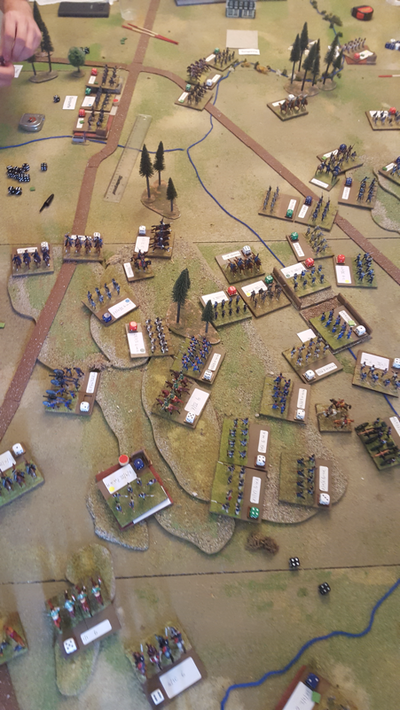
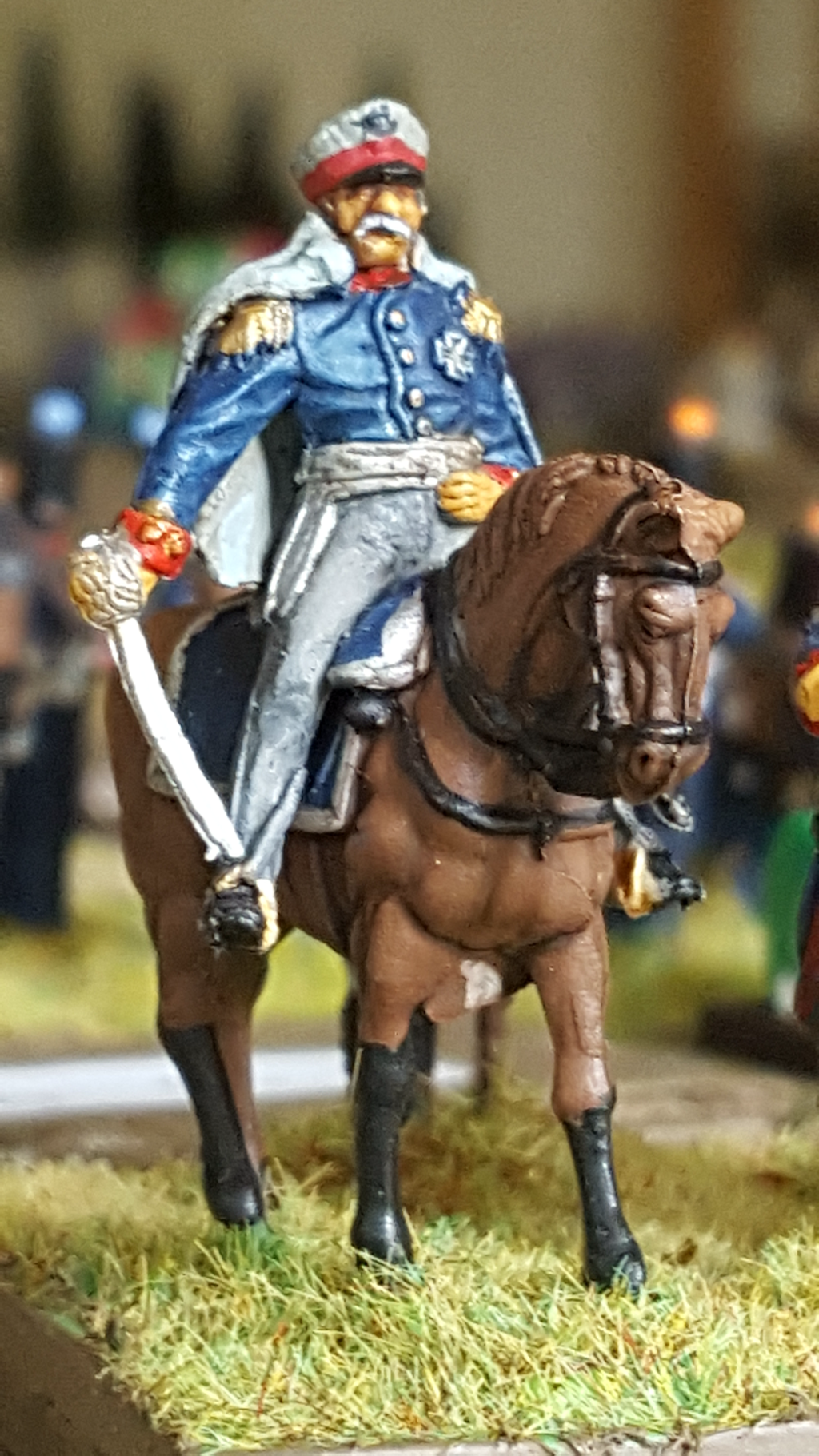

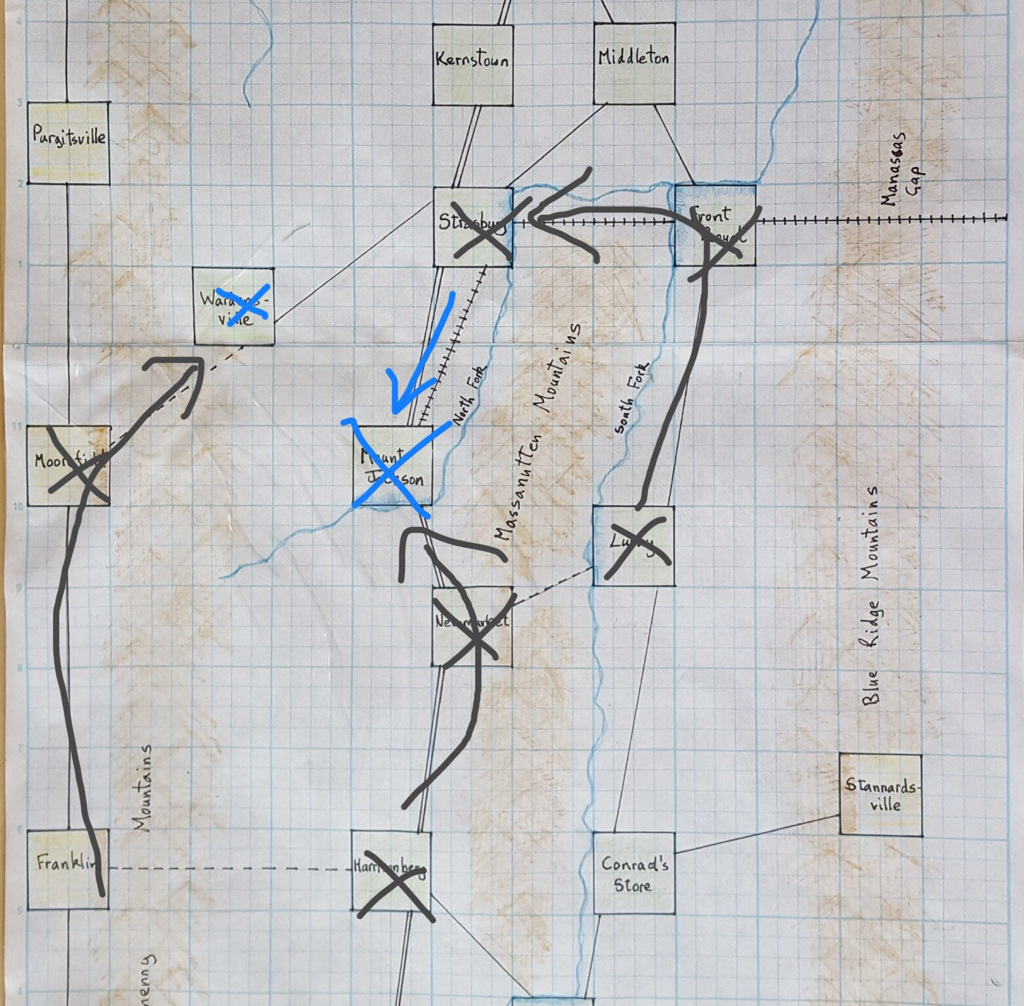

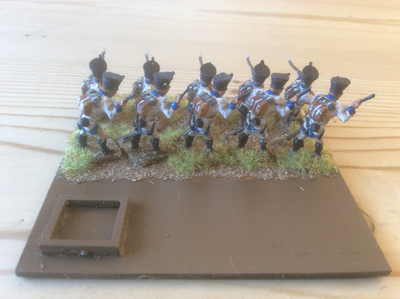
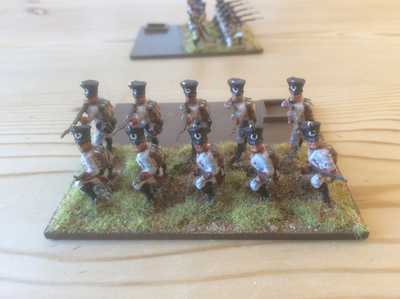
 RSS Feed
RSS Feed